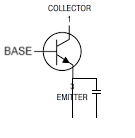Securb
One of Jerry's Kids
How does it compare to the actual amp?
It's hard to say. I blew up my Decade around '85, but based on fuzzy memories, it is pretty much in the ballpark of my style at that time and the tone I would have used and liked back then. Keep in mind, back then, I went from the speaker out of the Peavey directly into the Fender Quad. With a cranked MXR D+ and Morley BOOST in front of the Decade. I will probably take it downstairs this weekend and plug it int the Quad Reverb for poops and giggles.
The saturation switch engages a 22uF bypass capacitor to ground which boosts the entire frequency range. Engaging a bypass cap makes it sound louder and higher gain.
That makes sense, I noticed with SATURATION engaged, there was no extreme change in the EQ. SATURATION seems to just give more of everything across the board.It is also more present and upfront.


